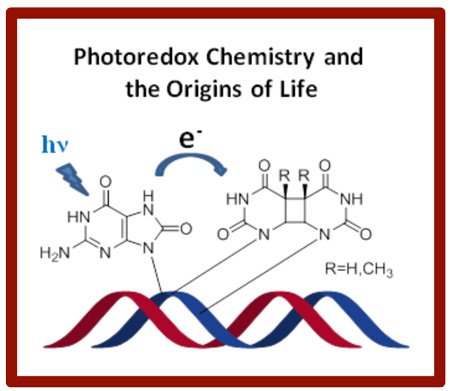Photoredox Chemistry and the Origins of Life

Among the most fundamental questions scientists can pose is that of the origin of life from a prebiotic collection of molecules. Present hypotheses include a "metabolism-first" concept of biomolecular synthesis from mineral-rich deep sea vents as well as the "RNA-first" abiotic synthesis of RNA oligomers capable of catalysis and self-replication. Yet, the functions ascribed to ribozymes do not typically include redox chemistry. We propose that redox-active bases in RNA (such as 8-oxoguanosine, OG) might have played the role of modern-day coenzymes, such as the RNA-based cofactor FADH2, in the RNA World. For example, we see that OG is a photoreductant for repair of thymine dimers in DNA or uracil dimers in RNA, an unusual example of one form of damage repairing another. This work further asks the question: Was repair of photodamage in RNA a driving force for evolution of redox cofactors?
Funding: National Science Foundation, CHE-11525233
Collaborators: Jack Simons (University of Utah)
